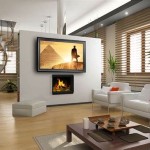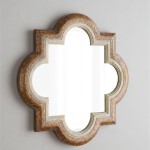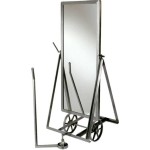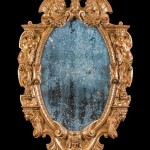Convex Mirrors: Exploring the World of Virtual Images
The realm of optics is filled with intriguing phenomena, and one such fascinating aspect is the behavior of light as it interacts with convex mirrors. Unlike their concave counterparts, which produce real images, convex mirrors exclusively produce virtual images. Understanding this unique characteristic is crucial for comprehending the distinctive applications and limitations of these mirrors.
The Nature of Virtual Images
Virtual images are distinct from real images in that they cannot be projected onto a screen or captured on a camera. They appear to exist behind the mirror's surface, as if suspended in space, and can only be observed indirectly. This is because the light rays that form the virtual image diverge as they bounce off the convex mirror, never actually meeting at a physical point. Consequently, virtual images are always upright and reduced in size compared to the object they represent.
How Convex Mirrors Create Virtual Images
The formation of virtual images in convex mirrors is governed by the laws of reflection. As light rays encounter the curved surface of the mirror, they obey the principle of specular reflection, meaning they bounce off the surface at an angle equal to the angle at which they strike it. However, due to the convex shape of the mirror, the reflected rays diverge as they leave the surface.
An imaginary line drawn through the center of curvature of the mirror, perpendicular to its surface, is known as the principal axis. When parallel rays of light strike the mirror, they reflect and appear to diverge from a point on the principal axis behind the mirror. This point is where the virtual image of the object at infinity is formed.
Characteristics of Virtual Images in Convex Mirrors
Virtual images produced by convex mirrors possess several notable characteristics:
-
Upright:
Virtual images are always upright with respect to the object. -
Reduced in size:
Virtual images are always smaller than the object they represent. -
Located behind the mirror:
Virtual images appear to be located behind the surface of the mirror. -
Unable to be projected:
Virtual images cannot be projected onto a screen or captured on a camera.
Applications of Convex Mirrors
Convex mirrors find widespread application in various fields due to their unique image-forming properties:
-
Rear-view mirrors:
Convex mirrors are commonly used as rear-view mirrors in vehicles, providing a wider field of view compared to flat mirrors, enhancing safety and visibility. -
Security cameras:
Convex mirrors are employed in security cameras to monitor blind spots or provide a wider coverage area. -
Parking lots and driveways:
Convex mirrors are installed at intersections or blind corners in parking lots and driveways to improve visibility and prevent accidents. -
Decorative purposes:
Convex mirrors are also used as decorative elements in architecture and interior design, creating optical illusions and expanding the perceived space.
Conclusion
Convex mirrors offer a fascinating exploration into the realm of optics, exclusively producing virtual images. Understanding their unique characteristics and the principles behind their formation is essential for appreciating their diverse applications and limitations. From enhancing safety in vehicles to creating intriguing visual effects, convex mirrors continue to play a significant role in various fields, serving as a testament to the captivating world of light and its interactions with reflective surfaces.
In A Convex Mirror Why Is Virtual Image Formed Quora
Can A Convex Mirror Form Magnified Image Quora

Question Recalling Whether The Image Produced By A Convex Mirror Can Be Inverted Nagwa
Can A Convex Mirror Produce Real Image
Solved Convex Mirror Produce A Only Virtual Images B Chegg Com

Virtual Image Wikipedia
Under What Condition Do Converging Lines Form A Virtual Image Quora
Solved Convex Mirrors Produce Only Virtual Images Real Chegg Com
Is It Possible For A Convex Mirror To Produce Real Image When The Object Virtual Quora

Convex Mirror Uses Of Definition Equation







